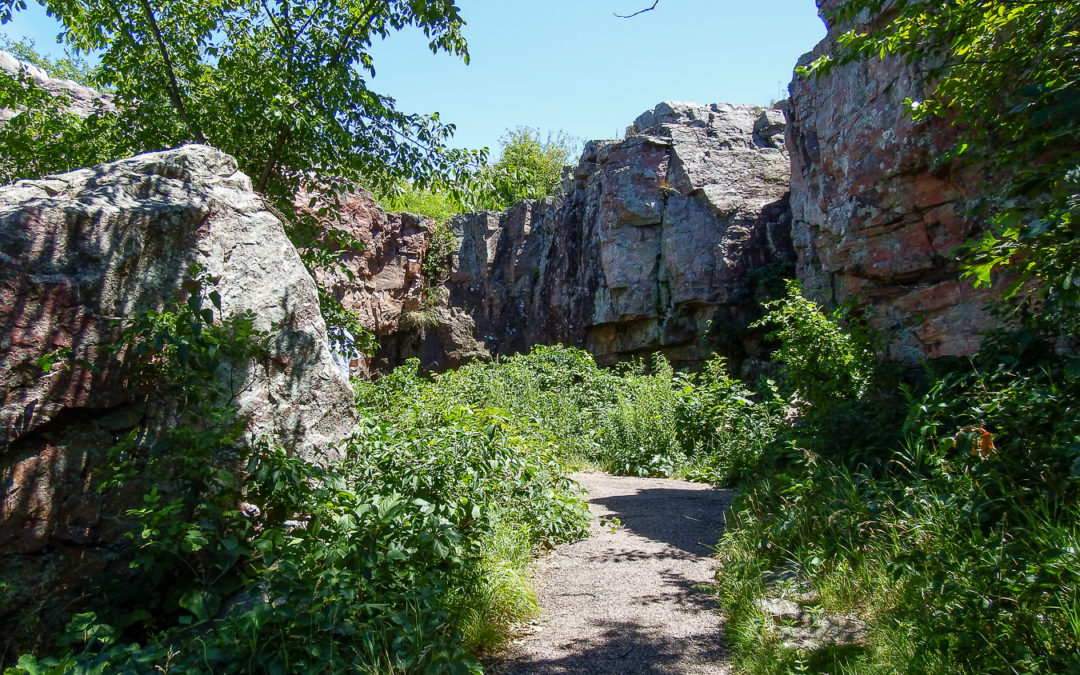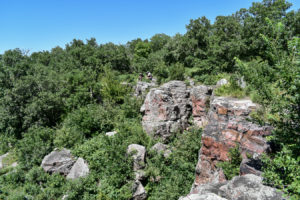
The stone quarry at Pipestone National Monument
In the mid-1990s, we spent a half year roaming the country in the ultimate boomer dream, a motorhome. One of our goals for the trip was to see as many national parks as we could. In those pre-internet-at-your-fingertips days, we went with three books: a guide to the National Parks, a national park passport book, and an indexed Encyclopedia of American Folklore. With the Rand-McNally Road Atlas and a campground guide, we were good for months. As we approached a new state, we pulled out both guides and searched for anything to explore. In Minnesota, Pipestone National Monument looked intriguing and as it wasn’t too far off the interstate leading us to the Badlands, we thought we would check it out.
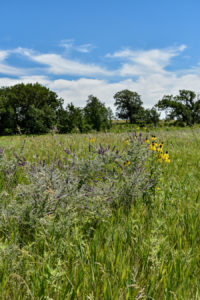
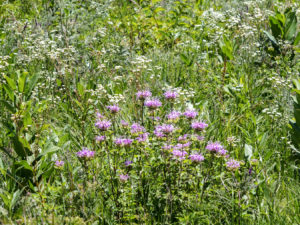
Prairie in full summer at Pipestone
Fast forward to the pandemic year of 2020, and we found ourselves in the same neighborhood and made another stop at Pipestone. As world travelers, folks often ask our favorite this or that – best beach, favorite city or country, best cruise, road trip or food to eat. But the one we hear very often is “What is your favorite National Park?”
We have always answered: little known Pipestone National Monument in southwestern Minnesota. Let’s be clear, you likely haven’t heard of it. There’s a picnic area but no campground (although plenty nearby). There’s no vast vista views or fancy restaurant.
What Pipestone has is heart. And we have experienced it both times we’ve visited. Nestled on the edge of the tall grass prairie most synonymous with the Little House series (the homestead is less than 20 miles east), the park celebrates the sacred grounds of the red pipestone quarried by generations of American Indians. These pipes were renown to be used for prayer with the smoke believe by many to carry one’s prayers to the Great Spirit.
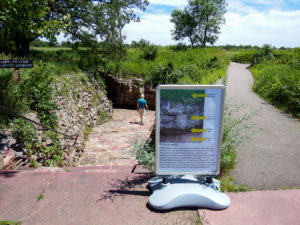
Entering the quarry trail
Quarrying and pipe making traditions continue with 23 affiliated tribal nations represented on the management board in a rare contractual arrangement pre-dating the creation of the park. We learned on our first visit that it is one of the few national parks not owned by the federal government and have witnessed in both eras that the staff are all tribal members.
Perhaps that inherent ownership is the heart of the place. Or maybe it’s the unique spiritual aspect of the quarries themselves and the excellent walking trail from prairie grass to sandstone cliffs to a running brook and waterfall. As you would expect from our national park system, there are plenty of pieces of information to absorb and learn – 100 bird species, 26 fish species, 500 plants, etc. Signposts share both cultural and natural points of interest along the mile-long Circle Trail with plenty of additional trail heads to branch out.
According to the park website, “The Monument was established in 1937 to ensure access for American Indians enrolled in federally recognized tribes to the pipestone quarries. It also preserves a distinctive geological story, glacial history, and 301-acres of tallgrass prairie.”
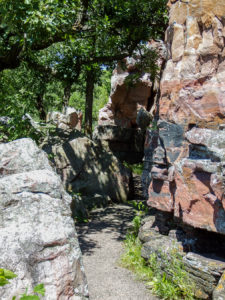
The quarry path
But long before the formal establishment as a Monument, American Indians came to the quarries – over 3,000 years ago.

Pipestone’s waterfall
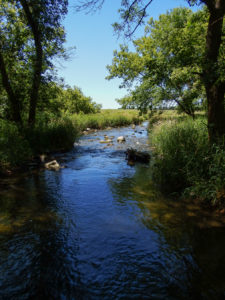
The creek runs from quarry to prairie
French fur traders wrote about the stone in the 1600s and the US Government made the area a reservation in the 1850s. American Indians continue to both quarry and carve pipestone today making it one of the only national park sites preserving a living tradition.
And it is that story that impacted us so much on both visits. We can’t remember all the details of our first visit, but the impact was so strong it lingered in our minds. We purchased a piece of carved stone then which still remains in our collection. The most recent opportunity to learn more introduced us to Pam, a fourth-generation woman pipe carver and the only remaining woman carver in the county. She showed us how she uses a hacksaw to cut shapes and then file and sand them smooth. She uses heat and beeswax to rub a shine in the pipes and trinkets. She prefers the traditional methods and is careful to use every single piece of the sacred stone. She takes the shavings back down into the quarry to “be where they belong” although she did tell us about another carver who mixes them with epoxy to make magnets and jewelry.
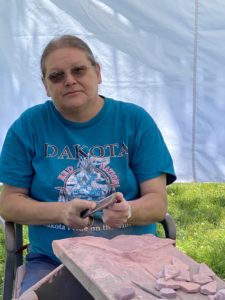
Fourth-generation woman carver Pam
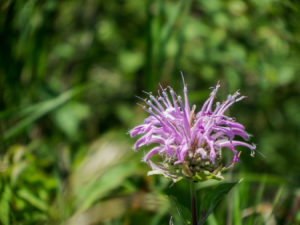
Lovely summer prairie flowers
We would suggest this park should be on the DON’T MISS list of the 423 national park sites in the country. Having visited almost half of them, we think this is the best. So far….
For more information, https://www.nps.gov/pipe/index.htm

